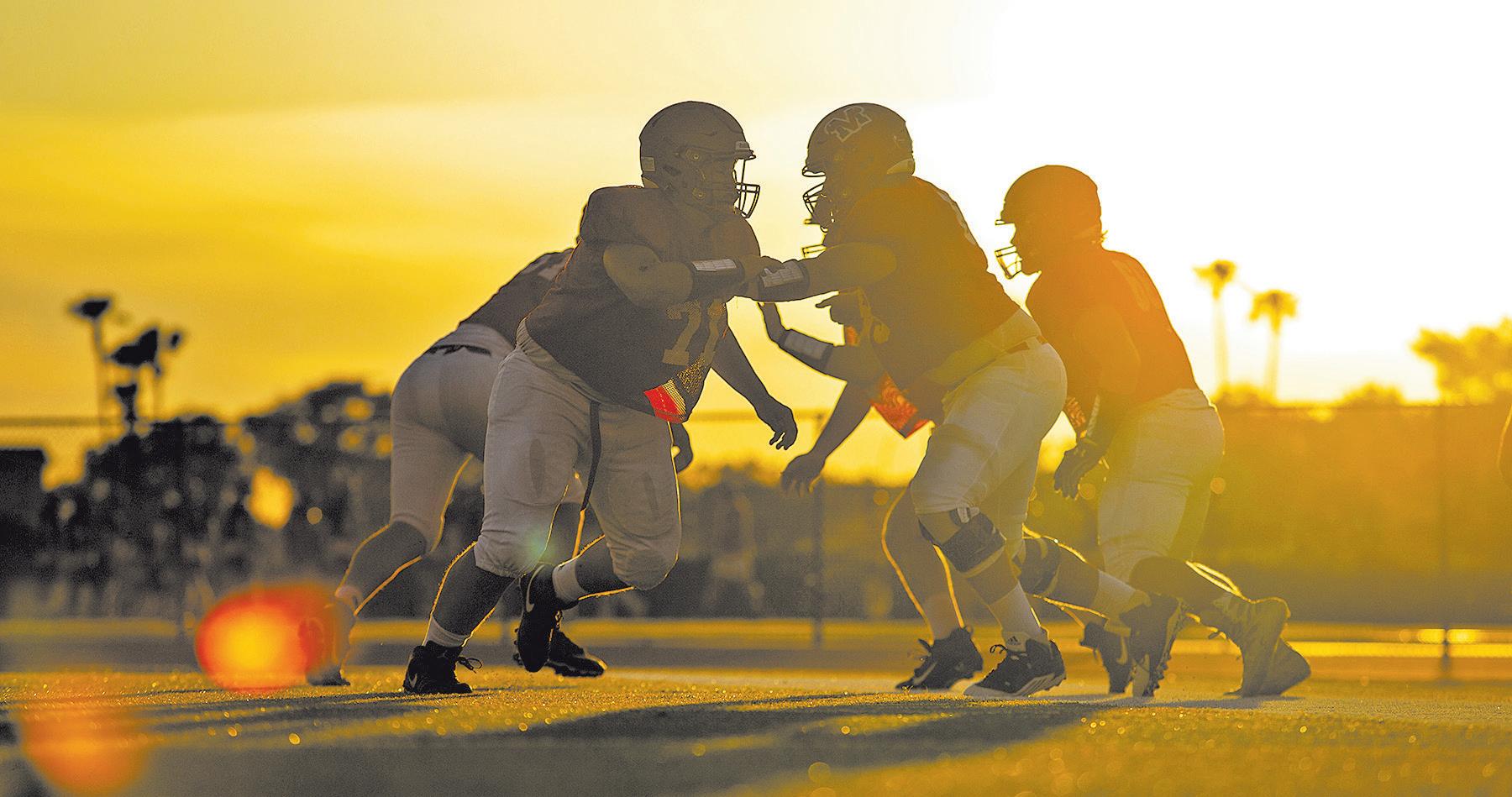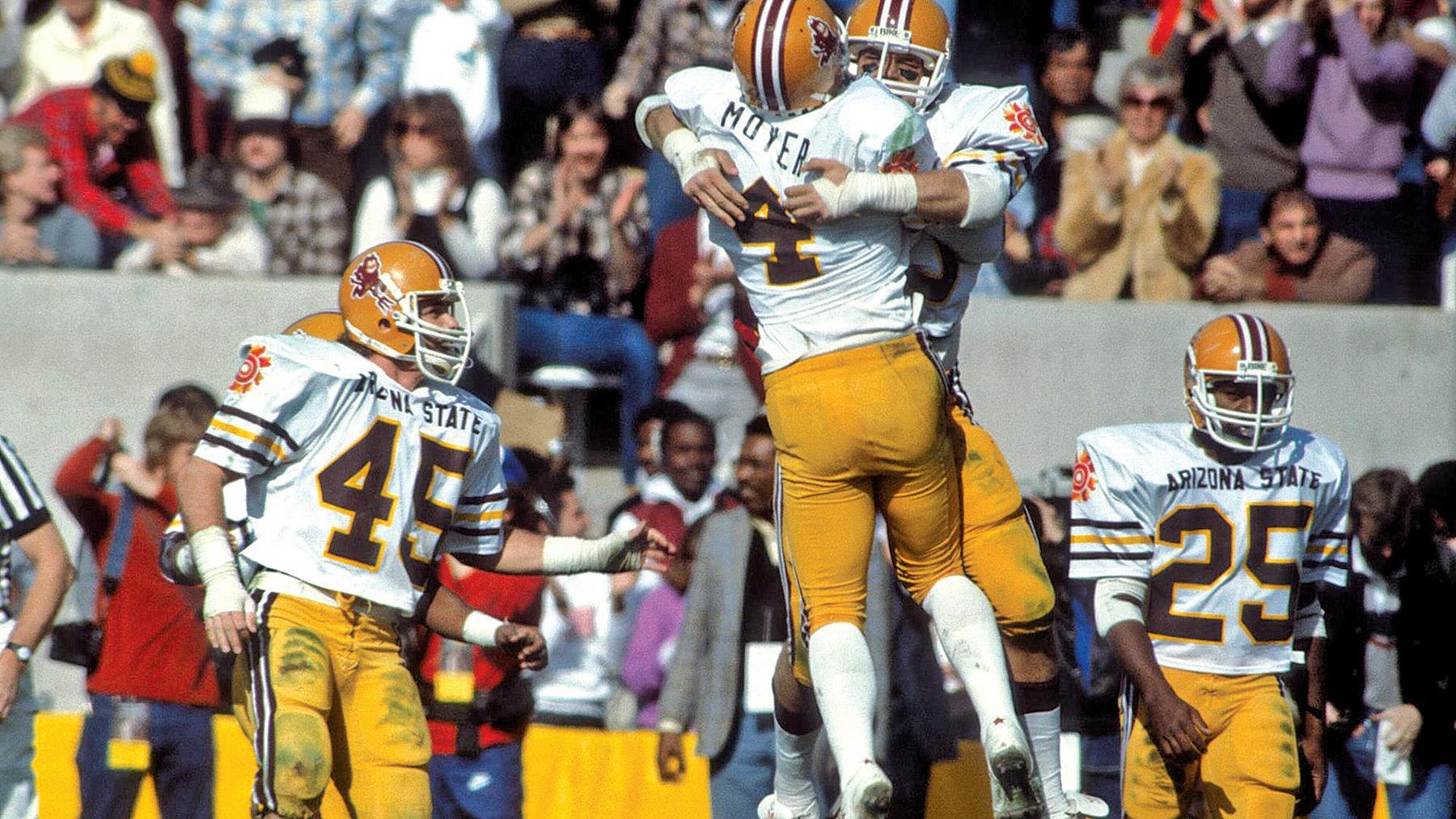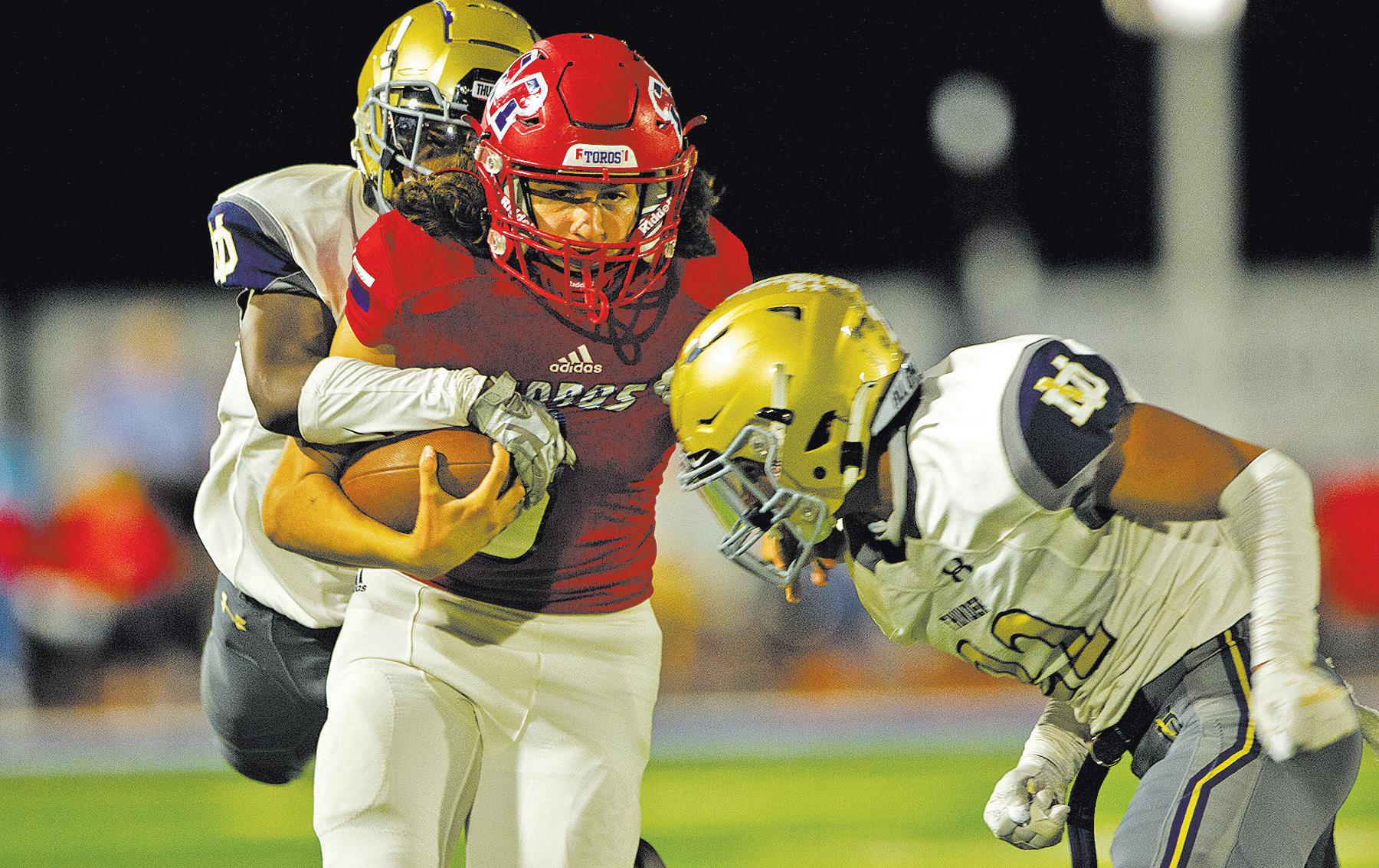
10 minute read
SPORTS
Check us out and like the Ahwatukee Foothills News on Facebook
BY RYAN MCCLURE
AFN Contributing Writer
Head injury awareness has increased at an exponential rate in the past decade, leading to monumental strides at the high school athletic level.
The rate of concussions continues to grow across high school sports, amid growing efforts to prevent head trauma and protect the safety of athletes. The medical field’s leaps in awareness on head injuries has led to a categorization on different types of traumatic brain injuries. The most prominent on the high school athletic level are concussions.
According to the U.S. Department of Health and Human Services, a concussion is a bump, blow, or jolt to the head or by a hit to the body that causes the head and brain to move rapidly back and forth.
“There has been a really strong progression towards really addressing that aspect of head injuries,” Highland High School athletic trainer David Hayward said. “We have focused on head injuries and made sure athletes are safe and not playing with anything that potentially involves a head injury. Concussions are the lowest grade of brain injury, but they can turn into something really big.”
Certain levels and sports see higher rates of concussions than others. According to the American Academy of Pediatrics, boys’ football, girls’ soccer and boys’ ice hockey are the three sports with the highest concussion rates.
Concussions are most commonly found in instances of falls or collisions with other athletes. From sport to sport, the mechanism of injury varies, even offthe-field occurrences happen.
Boys’ football, with 10.4 concussions per 10,000 athlete exposures, leads all sports in the rate of concussions. Although the most padded sport, it still comes in at the top.
“Helmets were originally created to prevent skull fractures,” Campo Verde High School athletic trainer Julia Marino said. “The technology of the cushions in the helmet and shock absorption are there. But if concussions still occur, it proves itself.”
Arizona high schools are now taking advantage of easier access to modern head injury technology. Valley schools have integrated these technologies to help prevent and enhance recovery of head injuries and concussions.
ImPACT (immediate post-concussion assessment and cognitive testing) is a computer-based head injury assessment tool used to help the medical field, and specifically athletic trainers. It has
Concussions remain at the forefront of discussions regarding the safety of certain sports at all levels, but especially high school. In Arizona, schools, athletic trainers and coaches continue to take necessary steps to better understand and potentially prevent head injuries. (Dave Minton/AFN Staff)
see CONCUSSIONS page 30
ASU legends reflect on Fiesta Bowl, express concern
BY REMY MASTEY
Cronkite News
Back in 1982, Michael Jackson’s “Thriller” album was atop the music charts, Rocky III was playing in theaters and Arizona State’s football program appeared to be on the verge of becoming a national powerhouse.
The 1982 Sun Devils, coached by Darryl Rogers and featuring future NFL players such as running backs Darryl Clack and Alvin Moore, cornerback Mike Richardson, defensive end Jim Jeffcoat, kicker Luis Zendejas and wide receiver Ron Brown, won their first nine games and rose to as high as No. 3 in the Associated Press rankings.
That squad lost its final two regularseason games against Washington and Arizona, letting a Rose Bowl berth slip Arizona State entered the 1983 Fiesta Bowl against Oklahoma as major underdogs but pulled off the 32-21 upset in Tempe after a successful season. (Photo courtesy of the Fiesta Bowl) away, but bounced back to beat Oklahoma in the 1983 Fiesta Bowl. Hotel in downtown Phoenix to honor their Fiesta Bowl victory. They reminisced about that 1982 season, but also voiced concern about the direction they see the program going today.
Players from that 1982 team cited several reasons they believe the program has slipped, including poor local recruiting and greater competition in the Valley’s booming sports market.
“I think one big thing for ASU is to focus on recruiting here in Arizona, because we have a tendency to lose a lot of players that are here in Arizona to other schools,” Clack said. “We have got to focus on trying to keep those players, because they are successful when they go to other teams.
“So why not be successful at Arizona see FIESTA page 30

been branded as the most effective tool for creating baseline concussion tests, which are used to compare a person’s cognitive abilities after injury to before.
Modern technology like ImPACT has led to a safer and more efficient recovery process for athletes. Identifying when an athlete is back to the testing level, they were at during the baseline test is key to allowing a player to return to play safely, preventing long term injury.
Another advancement in understanding concussions has been the Sport Concussion Assessment Tool 5, often referred to as the SCAT-5. The SCAT-5 is a standardized tool designed to assist with the clinical and sideline assessment of concussion.
The SCAT-5 is a good predictor of the duration of time away from sports in high school athletes with concussions, which allows athletic trainers to have a better understanding of where each specific athlete is at in their recovery process, or to even identify if a player has a concussion.
“There are always optics out there watching,” Hayward said. “If a player elicits some sort of sign or symptom of a concussion then they will be approached and addressed.”
The state, athletic program, and even specific teams have taken steps since the modern wave of awareness of these injuries.
Coaches have implemented their own methods to potentially prevent head injuries. From neck stretches to limited “hitting” time, or when players can fully
FIESTA from page 29
State? I think once that changes, maybe we will get better.”
Clack has a point. Of the top 25 recruits in Arizona last season, as ranked by 247Sports.com, none committed to Arizona State. Three committed to the University of Arizona.
But recruiting isn’t the only issue.
More than a dozen players from the 2021 ASU roster transferred to different schools, including starting quarterback Jayden Daniels, who is currently enjoying a breakout season for Louisiana State, rated sixth in the latest College Football Playoff rankings.
The Sun Devils filled some of the holes with players from the NCAA transfer portal, but the lack of continuity was evident during a slow start that led to the removal of coach Herm Edwards three games into the season.
“You were able to transfer back in the day, but I think today guys don’t have as much loyalty because if a player gets benched or doesn’t get what they want, they can just transfer to another team,” said Todd Hons, the quarterback on that 1982 ASU squad. “I personally think that is wrong. You teach a kid not to just quit and go to another place. So I think that is part of the problem.”
In 1982, Arizona State football was arguably the biggest sports attraction in the Valley. The Phoenix Suns were the state’s only major professional sports franchise at the time, and during football season, Sun Devil Stadium was the place to be on Saturday nights.

Desert Vista student Gavin Chavez, “right,” gave up football to focus on his long-term health after suffering numerous concussions throughout his playing career dating back to 7th grade. His father, Gary, as assistant at Desert Vista, said he respects his son’s decision. (AFN File Photo) use their tackling techniques. Each specific coach has their own implementations in their practice schedule.
But it isn’t always fool proof.
Gavin Chavez, a senior at Desert Vista, has been one of the many athletes in the Valley to be impacted by head injury.
Chavez is a member of the varsity football team and varsity lacrosse at Desert Vista. He has played football since the age of 6 and has picked up lacrosse since. His first concussion was minor in 7th grade, followed by a more serious one the following year.
“Gavin plays with a certain energy, he plays with all his heart,” Gavin’s father and Desert Vista assistant coach Gary Chavez said. “He was an impact player.” Chavez stayed symptom free until his first game his junior year. But in that first game Chavez was hit hard on a kickoff return, leading to another concussion with microfractures detected. Six games later, and almost a month and half of recovery, Chavez was cleared to return to the field. In his first game back Chavez was injured yet again on a special teams play. “Special team plays are just so dangerous,” Gary said. “Players are flying around the field, and it results in more injuries than any other plays. Gavin got unlucky and just got in a couple bad situations.” Chavez was forced to make a decision after his latest concussion: Try to play or give up the sport to focus on his longterm health.
He showed maturity in his decision.
“He could have made an impact in his last season, but he chose his health,” Gary said. “We were going to support him with any decision he made, whether he wanted to take all the precautions in order to play. One day he decided to call it a career and look towards long term health and stability.”
The state and the Arizona Interscholastic Association have implemented rules over the years to help combat the rate of concussions. From changing kickoff alignment rules, and adding defenseless player and helmet to helmet rules, the AIA has implemented new ideas to prevent higher rates of injury.
All athletes and coaches have to complete “Brain Book,” which is an educational program that the AIA mandates statewide.
The awareness and the level of education on head injuries has raised, which has allowed athletes like Chavez to make decisions to benefit their long-term health where historically long-term brain health has not been in the forefront.
The new wave of concussion awareness and modern implementations has led to new methods of prevention, diagnosis, and recovery.
“I feel we are really going in the right direction when it comes to concussions,” Hayward said. “There is still just a lot of research out there to do to really figure out about a young developing brain and how it could be impacted.”
“If you grew up back in the 70s and 80s, the only thing to do on a Saturday night in Phoenix, Arizona was Sun Devil football, for the most part,” said Pat Gamle, a Sun Devils football fan since the 1970s who attended the luncheon. “This was kind of our NFL team.”
Clack believes players have changed, too. They have different priorities than players in his era. Young athletes are more focused on building their brand than on building a team and can even profit now off of their name, image and likeness.
“We played as a family, we won as a family and pushed everyone to want to win as a family,” Clack said. “That’s the part that this generation is missing out on, because it’s all about ‘What can I do on social media? Who is looking at my social media?’ And all that kind of stuff. Let’s get back to focusing on being a family and being a teammate.”
The program’s slide into mediocrity is also evident in the many empty seats at Sun Devil Stadium. Average attendance slipped to 43,081 this season, the team’s worst since 1968.
One voice from ASU’s distant past offered a more realistic assessment. Larry Kentera, a 98-year-old former ASU player who was an assistant coach during the Frank Kush era, addressed the players at the luncheon.
“You know where we are right now, be honest with ourselves,” Kentera told the 1983 Fiesta Bowl champs. “You’re looking out there right now and are seeing what they’re doing.
“But we are going to get there. The Sun Devils always get there.”



